- Home
- slideshows
- miscellaneous
- 23 lesser-known cofounders of the biggest tech companies, and where they are now
23 lesser-known cofounders of the biggest tech companies, and where they are now
Apple co-founder Steve Wozniak

Apple co-founder Ronald Wayne
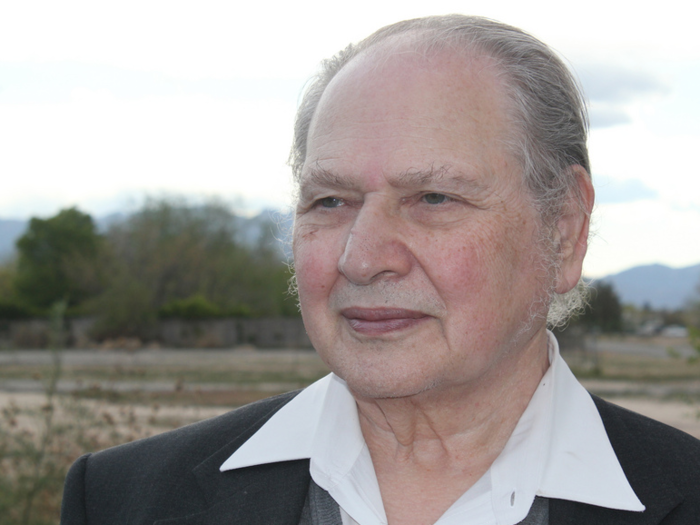
Steve Jobs and Steve Wozniak formed "Apple Computer" in 1976 alongside their administrative supervisor, Ronald Wayne, who was 42 at the time.
Wayne drew up the first logo and the partnership agreement that gave him 10% of the company, but only lasted for 12 days before deciding he couldn't keep up with the pace the company was going.
Wayne sold his shares for $800 — a decision he claims he doesn't regret. Today, he holds dozens of patents but not enough capital to profit from them, and sells gold, rare coins, and stamps from his home in Nevada.
Uber co-founder Garett Camp
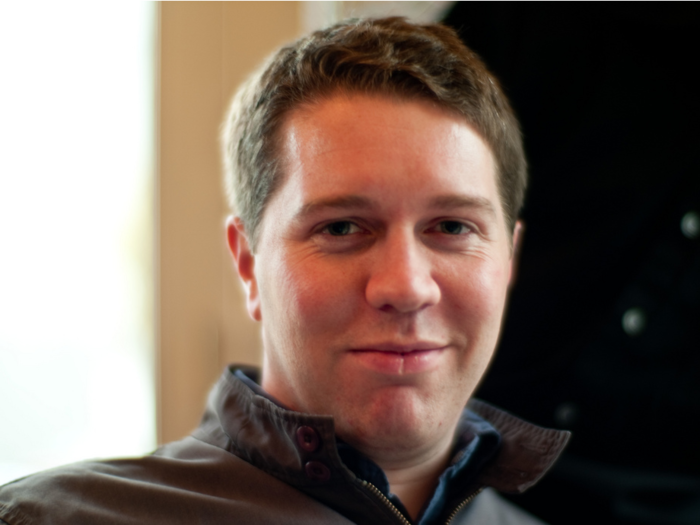
Even after stepping down as the company's CEO, Travis Kalanick seems to personify Uber as a company — but Kalanick wasn't the one to come up with the original idea for Uber.
"Garrett [Camp] is the guy who invented that s--t," Kalanick once said at an early Uber event in San Francisco. "I just want to clap and hug him at the same time."
Camp described what we know as "ride-sharing" to Kalanick when they attended the 2008 LeWeb conference: He wanted to create a convenient luxury car service that didn't cost a thousand dollars to use. Kalanick was on board, and UberCab started later that year.
The initial prototype was created by Camp and two of his friends from graduate school. Kalanick was brought on as a "mega advisor," and wasn't even CEO until 2010 when he replaced then-CEO Ryan Graves.
Camp earned his first fortune when he sold the web-recommendation tool StumbleUpon to eBay in 2007; he still serves as chairman for both StumbleUpon and Uber. He's also an investor and creator of startup studio Expa, which helps new founders build their own products.
Camp doesn't seem to be involved with the day-to-day at activities at Uber, although he did publish this blog post in light of all of the negative attention that Uber was getting last year.
Twitter co-founders Ev Williams, Noah Glass, and Biz Stone
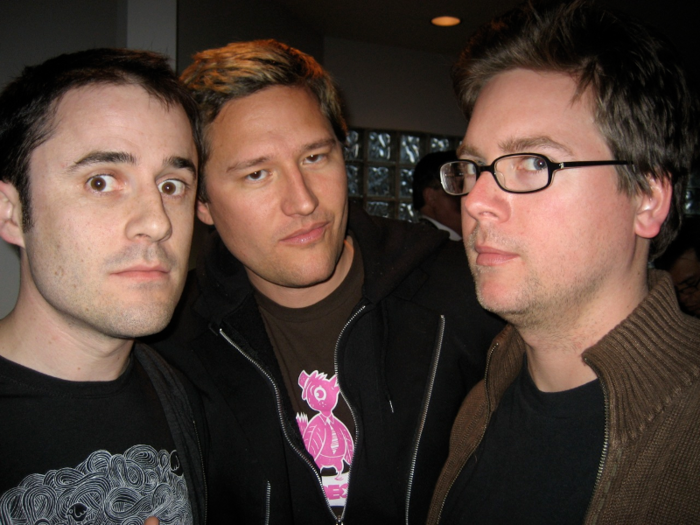
Jack Dorsey played a huge role in developing Twitter as a product, but he wasn't the founder of the company; he wasn't even referred to as the first or second most important player as recently as 2011.
Twitter spun out from Odeo, a podcast company co-founded by Noah Glass and Evan 'Ev' Williams (an ex-Googler who co-founded Blogger before it was sold to Google), who was also an investor in the company.
Williams pushed the team to come up with a new idea when iTunes announced the podcasting platform for iPods in 2005, and an idea from an Odeo web designer named Jack Dorsey caught Glass' attention. Glass worked with Dorsey and a contract developer named Florian Webber to pitch Twitter, and came up with the name (then "Twttr"). The other two built the prototype, but the service eventually ran on Glass' laptop, an IBM Thinkpad.
Biz Stone, another ex-Googler brought on by Williams, helped the Twitter team out from time to time, and wrote some of the legal documentation, according to a BI interview with Glass.
"There were two people who were really excited [about Twitter,]" investor George Zachary once told Business Insider. "Jack [Dorsey] and Noah Glass. Noah was fanatically excited about Twitter. Fanatically! Evan and Biz weren't at that level. Not remotely."
The following year, Williams bought all of Odeo — including Twitter — from shareholders, changed it to Obvious Corp. (which he says he co-founded with Stone), and allegedly fired Glass. The reason isn't entirely clear, though the most common belief is that Williams and Glass had clashing personalities. (The entire history of Twitter, and the relationship between Glass and Williams, is spelled out in a Business Insider story from 2011.)
Today, Stone is an angel investor, board director of multiple companies, and chairman of the photo app Polaroid Swing. He has invested in both Dorsey's and Williams' new ventures.
Williams was briefly Twitter's CEO and still has a stake in the company, but is now the founder and CEO of publishing platform Medium. He gave some credit to Glass, whose Twitter profile reads, "I started this," but not much else is publicly known about him. Here was the most recent tweet he shared:
I wish the twitter team the best of luck and trust that they will be successful in continuing to develop this important communication tool.
— noah glass (@noah) September 14, 2013Square co-founder Jim McKelvey
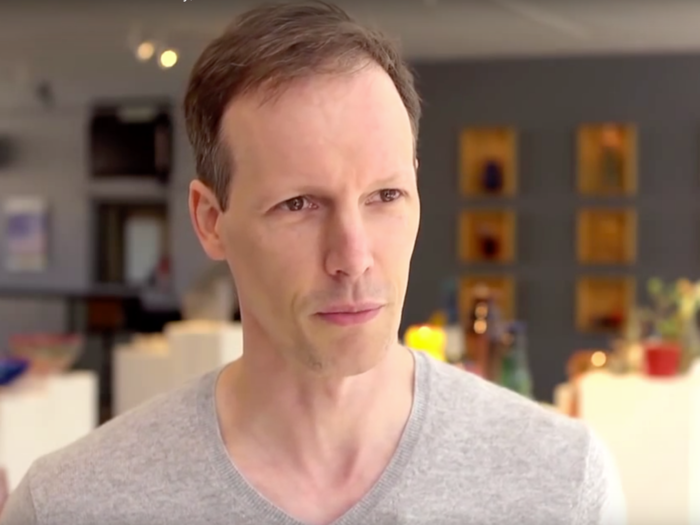
When Square, Inc. was founded in 2009, the name "Jack Dorsey" overshadowed McKelvey's, but both parties were responsible for the popular mobile-payments app.
Dorsey had once written software for McKelvey, and after he was ousted as Twitter's CEO, the two happened to reconnect.
"We started Square because Jim McKelvey, our co-founder and my second boss (after my mother!), couldn’t accept a credit card for his art," Dorsey said about McKelvey in the founders' letter from Square's S-1 filing before the company went public.
McKelvey shared his problem with Dorsey, and the two came up with the idea for Square. McKelvey designed the hardware and built the magnetic reader, while Dorsey wrote the software, according to Technology Review.
Today, McKelvey sits on the Board of Directors at Square. Since starting Square, he has founded two other companies: LaunchCode and Invisibly, according to his LinkedIn profile. He also founded a VC firm called Cultivation Capital, joined the Board of Directors of MoneyOnMobile, and in 2017, he was appointed as an Independent Director of the St. Louis Federal Reserve.
Tesla co-founders Martin Eberhard, Marc Tarpenning, Ian Wright, and JB Straubel
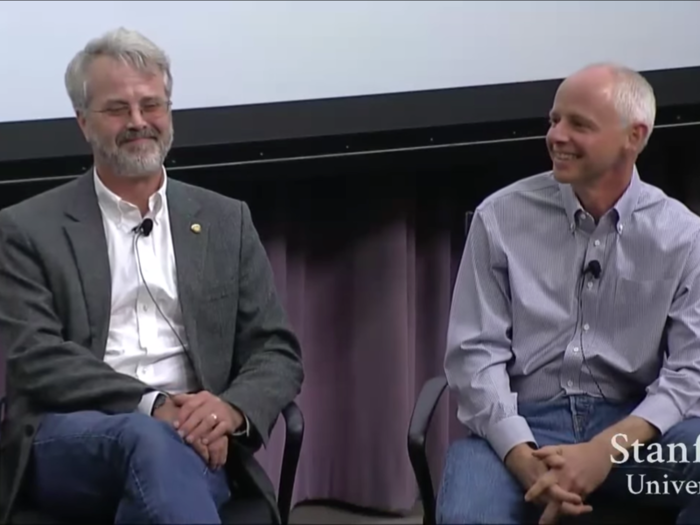
The matter of who founded Tesla Motors led to some legal back and forth in 2009, but Elon Musk definitely didn't do it alone.
Tesla was actually the 2003 brainchild of Martin Eberhard and Marc Tarpenning. The two engineers raised as much as they could without help, but ultimately needed to land a big investor to lead the Series A funding round. Ian Wright — who was third to join the team followed by JB Straubel — and Eberhard successfully pitched Tesla to Elon Musk in 2004.
Musk led two funding rounds and co-led a third before Tesla's first production vehicle, the Roadster, was finally unveiled in 2006. Both Eberhard and Tarpenning left after Eberhard was demoted from his position as CEO in 2008, and one CEO later, Musk took on the leading role.
Eberhard then sued Musk and Tesla for libel, slander, and breach of contract, alleging that Tesla had wrongfully tried to "rewrite history" by taking away his position as the founder. He eventually withdrew the case and part of the resolution was that there would be five official founders of Tesla.
Today, Eberhard and Tarpenning have worked together on a number of other electric vehicle projects including Volkswagen and SF Motors. Wright left a year after joining Tesla, and founded WrightSpeed, which develops electric parts for trucks. JB Straubel is still the CTO of Tesla, Inc.
Snap co-founder Bobby Murphy
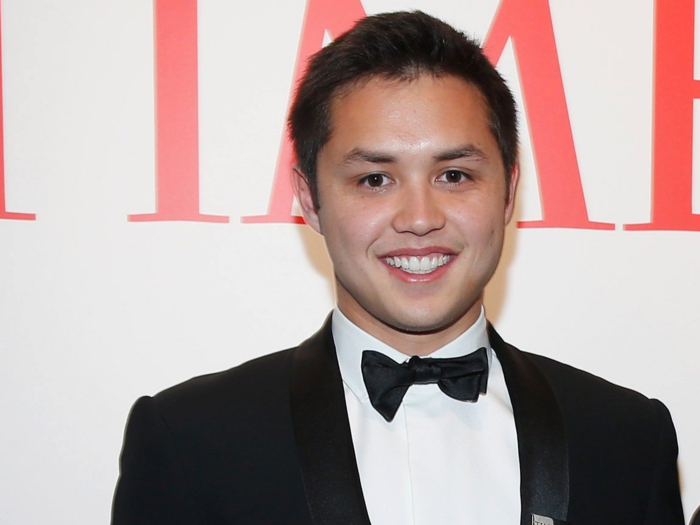
Bobby Murphy and Evan Spiegel met when they were Kappa Sigma fraternity brothers at Stanford.
Murphy was studying mathematical and computational science and Spiegel was studying product design, so they put their heads together to develop the prototype of an app that would make pictures disappear after they were shared. They once co-founded Future Freshman together — an app that failed to launch, but once helped high schoolers get advice when applying to colleges — but hoped this time would be different.
Murphy worked 18-hour days coding the prototype, and took a day job with the iPad-based register company Revel Systems before Snapchat took off. He remains the CTO and co-founder of Snap Inc., and has written most of the code for today's Snapchat application.
Both Snap co-founders have an equal net worth ($3.9 billion as of March 2018, according to Forbes), but Murphy prefers to keep a much lower profile than his counterpart.
Snap (almost) co-founder Reggie Brown
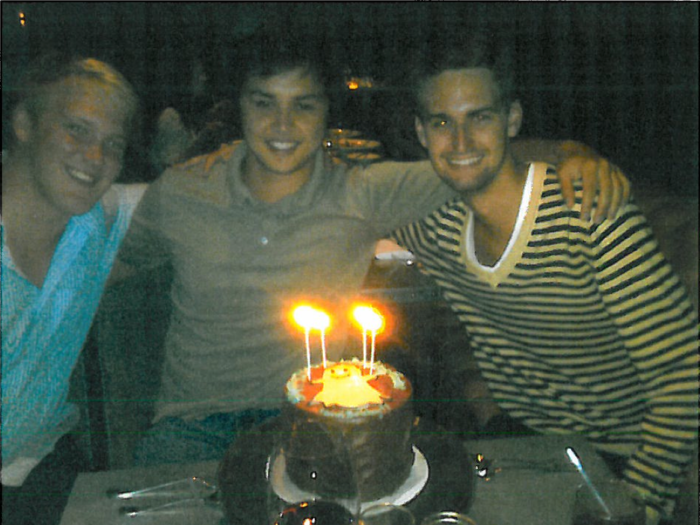
The Spiegel-Murphy duo was initially a trio, and the forgotten third member — Reggie Brown — was reportedly the idea man who took the matter to court.
Brown, also a Kappa Sigma brother, approached Evan with a concept for an app that sends pictures (yes, the idea stemmed from Brown's vision of sharing nude pictures, according to TechCrunch's Billy Gallagher) that disappear shortly after they're shared.
Spiegel recruited Murphy because neither he nor Brown had the coding chops. The three of them reportedly had a non-written agreement to share ownership and profit: Spiegel as CEO, Murphy as CTO, and Brown as CMO.
Brown came up with "Picaboo," the first name for the app, as well as the logo: a now widely recognizable ghost, who he named "Ghostface Chillah." But months after Snapchat launched in the iTunes Store — a glimpse at the celebration is pictured above — Spiegel and Brown reportedly felt that Brown was bringing little else to the table as CMO, and allegedly changed the passwords on the startup's servers and accounts.
In 2013, Brown sued his two former friends for breach of contract, and they settled a year later. Snapchat released a statement saying that Brown did come up with the idea, and he was paid $157.5 million, according to Snap's SEC filings for 2014 and 2016. That seems like it did the trick, because Brown has kept a low profile since.
The little that we know about Brown's whereabouts are that he hadn't had a paying job at the time of the lawsuit, and that he graduated with a master's degree in management studies from Duke in May 2014.
Microsoft co-founder Paul Allen
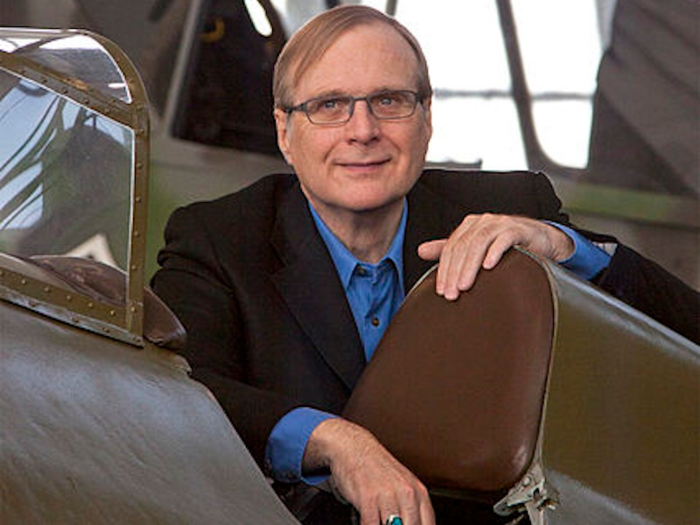
Microsoft co-founder Bill Gates might be the richest man in the world, but Paul Allen is doing just fine with the $21.9 billion he's worth.
The two became friends in high school and founded Microsoft in 1975. Allen came up with the name (originally Micro-Soft according to a 1995 interview in Fortune), and then sealed the deal for a technology that attracted IBM, resulting in Micro-Soft's take off.
He left in 1982 when he was diagnosed with Hodgkin's disease — a cancer that affects the immune system. He fully recovered (only to beat another immune system-affecting cancer in 2009) and founded Vulcan Inc, which manages all of his philanthropic and business work.
Allen is also:
Owner of the Portland Trail Blazers of the NBA, the Seattle Seahawks of the NFL, and has a stake in the Seattle Sounders soccer team Founder of Stratolaunch Systems, a space transportation company Founder of Allen Institute for Brain Science, Institute for AI, and Institute for Cell ScienceHe also plays the guitar — and well. Iconic producer Quincy Jones says Allen can play "just like" Jimi Hendrix.
Netflix co-founder Marc Randolph
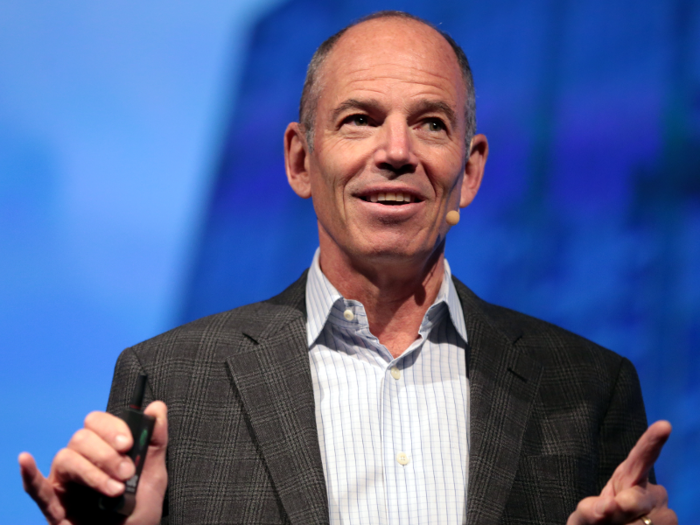
When you search "Reed Hastings" on Google, one of the first autocomplete suggestions is "Reed Hastings and Marc Randolph," and yet we hardly ever hear about the other co-founder of Netflix in the story about how it was founded.
Marc Randolph and Reed Hastings met when Hastings' company Pure Atria, where he was the founder and CEO, acquired the software company where Randolph worked. Hastings appointed Randolph to be vice president of corporate marketing, but soon after, Pure Atria was acquired by Rational Software.
During the four months while the Rational-Pure Atria acquisition was being finalized, Hastings and Randolph commuted together to and from Pure Atria's offices in Silicon Valley, actively brainstorming ways to leverage trends for a new business idea, according to Randolph's telling of the story. "And back then, Amazon is crushing it with books. What else can we crush it with?"
After the two mailed a CD to Hastings' home and it was delivered unharmed, Hastings invested money into the business idea and went to Stanford for a year to earn his master's degree, while Randolph took the reins.
Randolph was the first CEO of Netflix. He named the company, and designed both the brand and the interface. Hastings was initially going to be an investor and a board member, but when he started coming to the office more often, executives agreed it was time for a change. Randolph ceded the position to him in 1999 to turn to product development, because he missed the start-up phase of the company.
"As I look back on what some of the smartest things I ever did at Netflix, I think having [Hastings] come back and be a very, very major part of the company, eventually becoming CEO in my place, was probably the smartest thing I ever did there," Randolph said in his interview with Silicon Valley Business Journal.
Randolph stuck around until 2003, a year after the company went public, and stayed on the board until 2004. Since then, he's been a board member for a number of companies, a mentor, and a keynote speaker about entrepreneurship and innovation based on his time with Netflix.
Google co-founder Sergey Brin
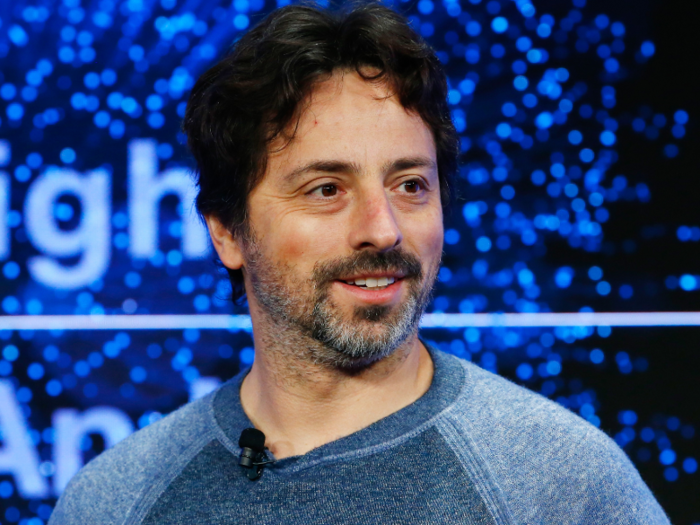
Sergey Brin and Larry Page met during the orientation for the computer science PhD program at Stanford, and haven't separated since. They built the most-visited website in the world (and everything else under the Google/Alphabet umbrella) together, yet Brin is in the spotlight far less often than Page.
Page has always been considered the visionary mind behind Google, but Brin is the extrovert of the duo. He handled the strategy, branding, and business-to-business relationships in the beginning stages — generally the qualities that we've seen in the more known co-founders like Jobs or Spiegel.
At Stanford, Brin's focus was in developing data-mining systems, and Larry's was on connecting research, based on citations. Page had a dream about downloading the whole web and woke up to write down an idea that he called PageRank, which ranked web pages based on how many other pages linked back to them. This algorithm was the foundation for a site called BackRub, which eventually evolved into Google.
It was Page's vision, and Brin used his people skills and expertise to help him develop it, but in almost every account of the story, credit is given to both men — again, an uncommon practice for co-founders when it comes to things like naming and designing.
The two have received a number of honors and awards together, and were even named Forbes' fifth-most powerful people in the world together in 2009. That same year, Brin was elected into the National Academy of Engineeering, "among the highest professional distinctions accorded to an engineer."
Today, Brin is the president of Alphabet, the parent firm of Google, where he used to run the company's "X" division — the research and development facility that develops semi-secret future-thinking technologies. He's worth $51.6 billion, just shy of Alphabet CEO Larry Page's $53.2 billion.
PayPal co-founders Max Levchin, Luke Nosek, and Ken Howery
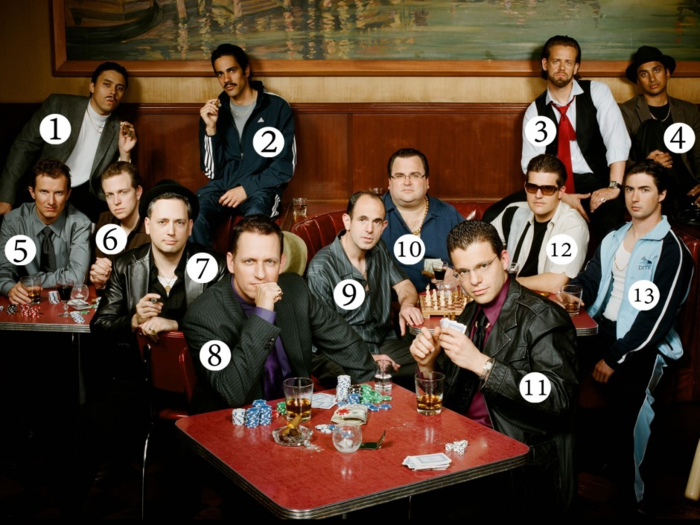
The former employees of PayPal came to be known as the "PayPal mafia," because a number of them went on to found other huge technology companies. While a lot of these people — like Yammer founder David Sacks and LinkedIn founder Reid Hoffman — were there for the early stages, fewer people get credit for starting PayPal. It started with Peter Thiel.
Thiel met Max Levchin when Thiel was giving a lecture at Stanford, according to Conner Forrest's reporting in TechRepublic, and the two began working together on a digital wallet. Thiel attended Stanford, and Levchin attended the University of Illinois at Urbana-Champaign, which is where almost all of their recruits came from.
"When we started PayPal, I remember one of the early conversations I had with Max [Levchin] was that I wanted to build a company where everybody would be really great friends and, no matter what happened with the company, the friendships would survive," Thiel, the former PayPal CEO, told TechRepublic. Hires were made through friend networks instead of via a recruiter.
Luke Nosek had attended UIUC with Levchin, where the two had worked together on co-founding a media company, and Ken Howery was recruited by Thiel after graduating from Stanford.
Thiel, Levchin, and Nosek founded Confinity — a company that made software that could transfer payments between handheld devices in 1998, like PalmPilots and PDAs — and then Howery joined them.
Thiel was the CEO, and Levchin was the CTO. Nosek was the VP of marketing, strategy, and business development, and Ken Howery was CFO. The product was called PayPal.
In 2000, X.com's founder Elon Musk made the decision to acquire Confinity, which had many employees at this point. The CEO at the time didn't agree, so he left and Musk took over, declaring Confinity as a priority. He was almost immediately replaced by Peter Thiel as CEO, who changed the name to PayPal, Inc.
We know plenty about the whereabouts of Thiel and Musk. After PayPal was acquired by eBay in 2002, most of the original PayPal mafia moved on.
Howery was eBay's Director of Corporate Development, but eventually rejoined Thiel in 2004 to be the VP of private equity at one of Thiel's VC practices, Clarium Capital Management. He then went on to co-found Founders Fund, Thiel's famous VC firm in San Francisco, with Thiel and Nosek.
Nosek left Founders Fund in 2017 to start his own investment fund called Gigafund, a SpaceX-focused fund, as reported by Axios.
Levchin founded social gaming company Slide in 2004. Google bought it for $182 million in 2010, and Levchin was allowed to run it independently until Page shut it down in 2011. He founded HVF, which spun out into financial technology company Affirm. He has served as a board member for a number of companies including Yelp and Evernote.
Other companies launched by the PayPal mafia:
Peter Thiel: Palantir Elon Musk: Tesla Motors, SpaceX David Sacks: Yammer Reid Hoffman: LinkedIn Russel Simmons and Jeremy Stoppelman: Yelp Jawed Karim, Steve Chen, Chad Hurley: YouTubeFacebook co-founders Dustin Moskovitz, Chris Hughes, Andrew McCollum, and Eduardo Saverin
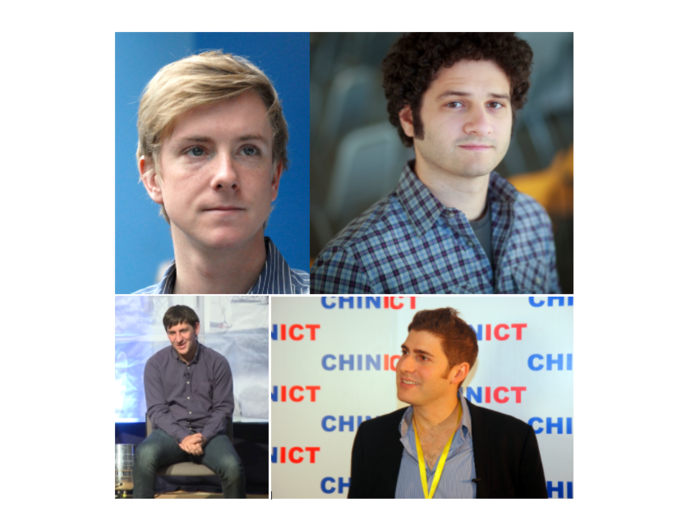
If I say "Facebook," you think Mark Zuckerberg.
In reality, it's much more complicated than that, as you probably know if you've seen Facebook's slightly fictional origin story, 'The Social Network." Zuckerberg wasn't even the company's first spokesperson.
The five founders were classmates at Harvard College. Zuckerberg, who was the mastermind* behind thefacebook.com as the site was called at the time, recruited roommates Moskovitz and Hughes, and two other friends to help him develop it.
Zuckerberg had known Eduardo Saverin for about a year when he invited him to join. Saverin was Facebook's first investor and took on the business partner role in the relationship during the early stages of Facebook.
Moskovitz, keen on helping Zuckerberg expand the site, learned the PHP language in "a couple of days," according to Zuckerberg, and became the company's first CTO. Hughes served as the spokesman, beta tester, PR specialist, customer service representative, and everything else user-facing, but he didn't write code or handle any of the business.
Zuckerberg knew Andrew McCollum from all of their computer-science classes, and he asked him to design Facebook's first logo — a face that was actually a sketch of actor Al Pacino. McCollum also worked on Facebook's file-sharing program called Wirehog, which never took off the way Zuckerberg planned.
The summer after the site launched in 2004, Zuckerberg, Hughes, and Moskovitz traveled to Palo Alto, California. Zuckerberg and Moskovitz decided to drop out of Harvard and stay to relocate their operations and start hiring employees. Hughes went back when the semester started, but joined them again when he graduated in 2006.
While they were in Palo Alto, Zuckerberg pushed Saverin out, and diluted his shares to 10% because of what Zuckerberg believed to be Saverin's lack of contribution to the company.
Saverin eventually sued Facebook over breach of fiduciary duty. He walked away with 4% of the company, and today he lives in Singapore, having renounced his US citizenship in 2011 — a year before Facebook's IPO, meaning the taxes he had to pay on capital gains were significantly reduced.
McCollum left in 2006, and co-founded the online preparation tool JobSpice. He's the current CEO of internet television company Philo and acts as Entrepreneur in Residence at both New Enterprise Associates and Flybridge Capital Partners venture firms.
Hughes left Facebook in 2007 to volunteer for Barack Obama's presidential campaign, did non-profit work with Jumo and UNAIDS, and purchased a stake in "The New Republic" magazine, which he later sold. He made $500 million when Facebook went public, and recently wrote a book called "The Fair Shot: Rethinking Inequality and How We Earn," citing his own wealth, most of which stemmed from his 2% ownership in Facebook.
Moskovitz left in 2008 to co-found team management app Asana. He continues to be the CEO there, as well as the co-founder of the philanthropy Good Ventures and an angel investor. He owns a 7.6% stake in Facebook, and was the youngest self-made billionaire in 2011 since he's 8 days younger than Zuckerberg. He and Zuckerberg both joined The Giving Pledge, started by Warren Buffett and Bill Gates, to give away at least half their wealth to charity.
*Shortly after the site launched, Cameron and Tyler Winklevoss and Divya Narendra — Harvard seniors at the time thefacebook.com started — claimed they had asked Zuckerberg to create a similar site for them, and they sued the newly incorporated Facebook and Zuckerberg. They settled in 2008.
Popular Right Now
Popular Keywords
Advertisement